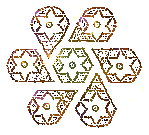Two old posts published
(1) "Gita 3.3" from December last year. This is about the pravritti-nivritti marga ideas that were recently revisited in the "Gita, chapter 6 and Yoga" post.
(2) "The heroic mood," from February this year. This is a continuation of various themes that I have been reflecting from time to time. In particular it is the result of reading Vivekananda's biography and B.G. Narasingha Maharaja's edition of Prakrita-rasa-shata-dushani.
I had reservations about both of these posts, and I suppose if I reread them really carefully, I would see what those reservations were. But for the time being, they will stand up fairly well pretty much as they are. I have a few others that might be presentable in the same way, which I will update and post when I get the chance.

(2) "The heroic mood," from February this year. This is a continuation of various themes that I have been reflecting from time to time. In particular it is the result of reading Vivekananda's biography and B.G. Narasingha Maharaja's edition of Prakrita-rasa-shata-dushani.
I had reservations about both of these posts, and I suppose if I reread them really carefully, I would see what those reservations were. But for the time being, they will stand up fairly well pretty much as they are. I have a few others that might be presentable in the same way, which I will update and post when I get the chance.
Radhe Radhe !




Comments
From today's perspective, you're right and I concur with every notion in your 'Heroic Mood' post. IGM has always had a strong dualistic approach in everything, from practising life to envisioning faith and understanding love. If we analyse it carefully, it starts with Bhaktisiddhanta Sarasvati's adaptation of a traditional raganuga devotion into a religious affair. Now, how can you make a religion of something that defies the very principle of the religion? Only if you twist its perspective and accentuate dualism, needed for a religion to spread and survive.
As a consequence, there's no balance in such an approach. It denies the very core of its own philosophy of acintya bhedabheda and even worse, it reads it differently too: it's often understood as acinty abhedabheda.
And even in its dualistic approach there's no incarnational mercy and closeness with people in general (like we found in Christianity for example), but rather a strong evangelistic, life-denying and "us and them" disposition. "Spread this at all cost". Spread "what"? By very attitude you use to spread "it", you deny "it".
On the other hand, I see both raga marg and Bhaktisiddhanta's GM and later ISKCON as marionettes in the hands of the grand nature itself; without a strong dualistic and religious approach that allows to spread something through the veins of dualistic nature, we could speculate what would be known about raga marg ideas in today's world. Perhaps a few words in some oriental encyclopaedia. Today we wouldn't be able to search for the source of original ideas if there were no bad consequences and lack of meaning IGM produced.
If we can compare this to a launching of a probe that aims to reach the Moon, we can say GM was a step one rocket, ISKCON was a step two rocket, and the very core of this philosophy and way of love was the space probe itself, untouched by flames of rockets, with real people inside -- real meaning. Of course, rockets burn out and are left adrift in space, but the mission was for people to reach the Moon, and make one big step forward for all humanity.
And it's upon post-modern man to accomplish that goal finally, and release itself into step three with its own thrusters -- reach the Moon.
PS.
[ And we can also ask ourselves; who actually designed this rocket? ;-) ]